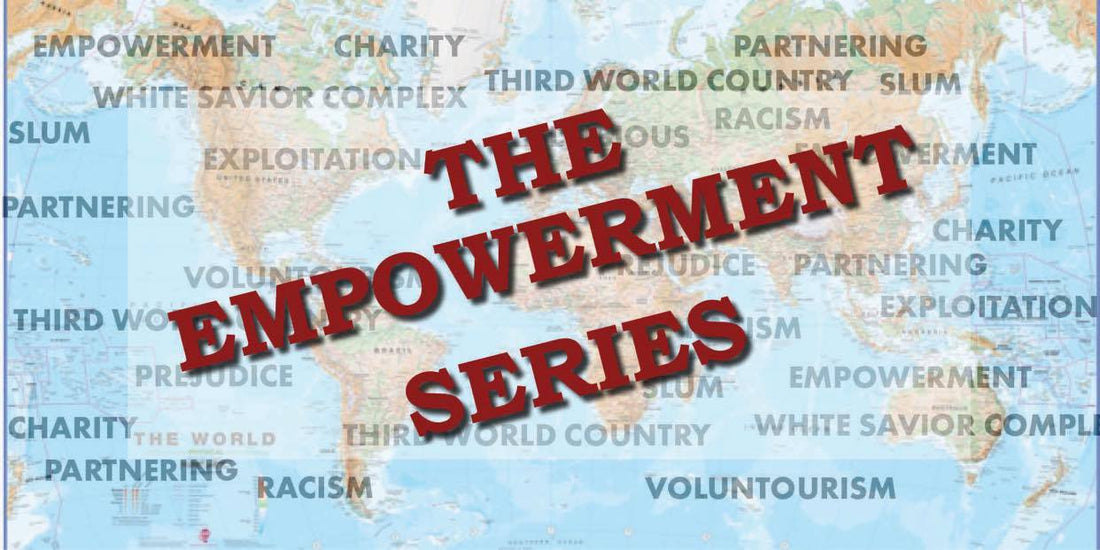
Forced Child Labor in the Chocolate Industry
Share
The Empowerment Series looks at some of the complicated issues and situations that occur in the Fair Trade world and possible solutions.
I went to Kenya not having much more than surface knowledge of Fair Trade or social entrepreneurism. I had purchased fair trade items from a Ten Thousand Villages store in Baltimore Maryland once when I was there for a speaking engagement. I knew a little about sweatshop labor and child labor before I ever went to Kenya or got involved in Fair Trade. However, since my involvement and since becoming a member of the Fair Trade Federation, I have made it a point to research more in depth into different aspects of Fair Trade and violations of Fair Trade so I am informed, educated and can be a voice to ensure there is no exploitation and atrocities against producers and artisans in our Baskets and Beads Supply Chain.
This week we continue the discussion by taking a look at the chocolate industry. Chocolate, who doesn’t love chocolate? I am a BIG fan of chocolate and usually have a small square of dark chocolate with almonds and sea salt as a treat after a meal.
As a kid I remember Hershey’s, Nestlé’s and Mars chocolates being a part of my life growing up. As I became more aware of Fair Trade and how buying fair trade was supporting many groups and also preventing child labor in the supply chain of producers, I was surprised to find out children were used to work on farms producing cocoa. I had no idea that the chocolate manufacturers I grew up with were involved in child labor to manufacture their products.
Mars, Nestlé and Hershey pledged nearly two decades ago to stop using cocoa harvested by children. Yet much of the chocolate you buy still starts with child labor.

The Washington Post did an extensive article about the child labor problem in the chocolate industry. If you haven’t read it I suggest you do in order to educate yourself on the problem. It goes into great detail and is very eye opening. Click on the link here to access the article:
Lets look at the basics of how chocolate is made:

The seeds of the cacao tree have an intense bitter taste and must be fermented to develop the flavor. After fermentation, the beans are dried, cleaned, and roasted. The shell is removed to produce cacao nibs, which are then ground to cocoa mass, unadulterated chocolate in rough form.
It’s in the farming process that child labor is a significant factor. There had been some progress made with Nestlé’s who was purchasing Fair Trade chocolate for their Kit Kat brand in the UK. However, it was recently announced that they are no longer going to buy fair trade chocolate but instead purchase it through different sources. This is going to cause a serious financial impact to all the farmers they are doing business with. Fair Trade certified farmers do not use child labor.
Here is an article that discusses that in more detail:
The main takeaway from this is to educate yourself on the facts of where the products you purchase are produced and who produces them. In the US we consume so many different products without thinking about who makes them and we do not really know if the people in the supply chain are children being forced to work. If you are a wholesaler buying products from producers or artisans, make sure you are familiar with and know who is working in the entire supply chain.

Recently George Clooney who is a spokesperson for Nespresso coffee discovered that there was child labor involved in the production of the coffee. Someone on his team should have verified the facts about the supply chain of the coffee so he would know the facts about the product he is representing. He indicated he did not know. It's not something we think of when we are purchasing or representing products, but need to be more aware.
One statistic I found indicated as many as 152 million children aged 5 to 17 around the world are engaged in child labor, working in jobs that deprive them of their childhood, interfere with schooling, or harm their mental, physical, or social development.
Robbing a child of education also robs them of the ability to advance beyond that type of work and enslaves them at that level for life.
You may be thinking it’s too overwhelming to pay attention and research all the products I purchase. If you want to start somewhere and don’t know where to start, start with chocolate, coffee or tea. There are many fair trade brands of those products that use certified producers which ensure that no children are working in their supply chain and that the workers get fair pay for the work they do. Here are a few examples of fair trade chocolate, coffee and tea. You can get them at many grocery stores or online. Also you can Google fair trade and the products you are looking to purchase to see if there are fair trade certified brands or at least ethical trading brands.




The more you are aware, the more you will know to make good and ethical purchases in as many areas as you can. Since reading that Washington Post article and discovering the child labor issue with chocolate, I have not purchased chocolate from the “big 3” manufacturers since. If we all do our part, we will make a difference.
Until next week, stay empowered!

1 comment
Wow, this is way worse that I imagined! We all love the products that are connected from chocolate and by paying more attention to brands and descriptions for Fair Trade, since I am not a Nestle guy any more!